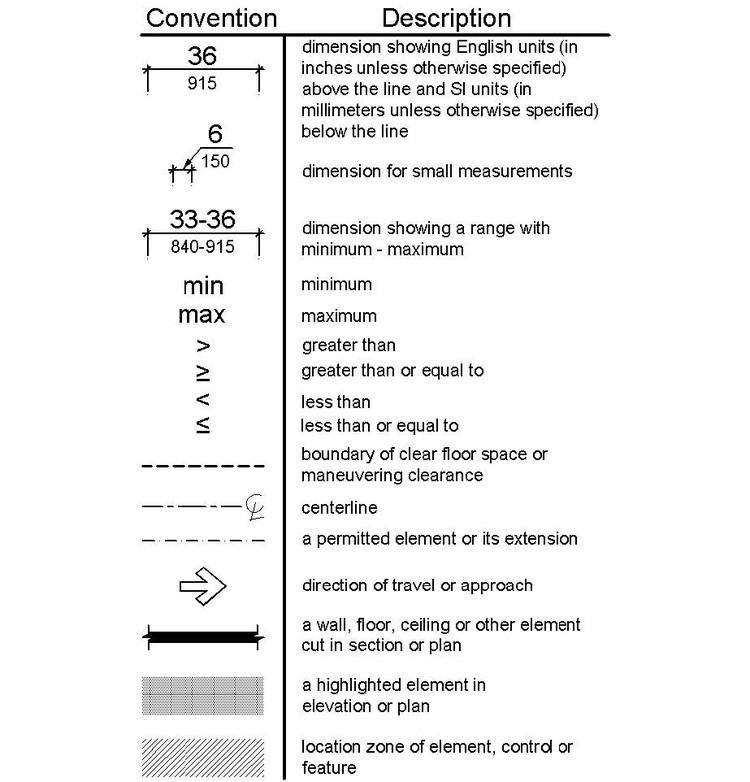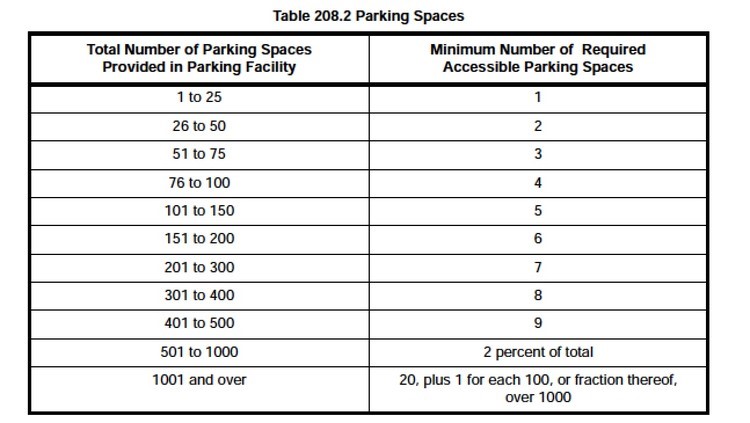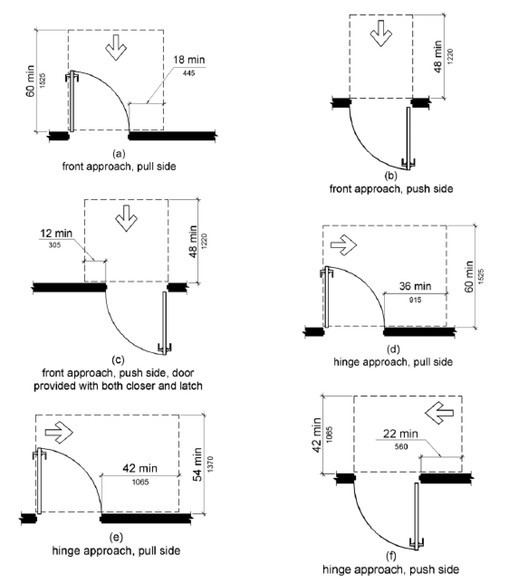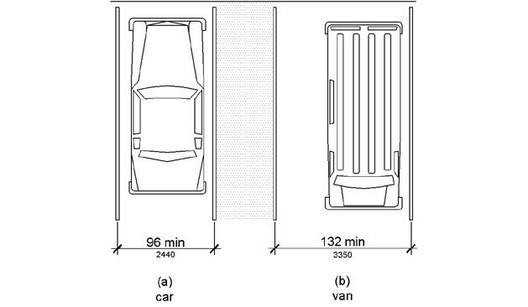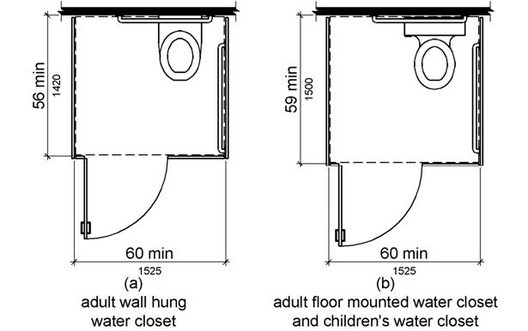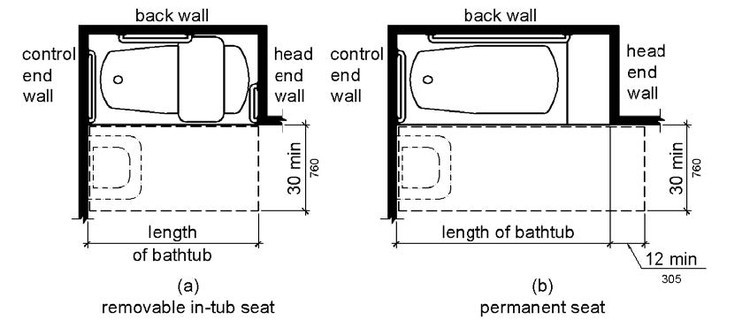Overview
The Americans with Disabilities Act (ADA) of 1990 is a civil rights law in the United States that prohibits discrimination based on disability. Because of its status as law, compliance is not optional. Municipalities do not have to adopt ADA in the way they adopt other building codes; it is already mandatory. The most recent version of the design standards for public spaces was released by the Justice Department in 2010 and it is what designers follow today. Keep in mind that similar to codes, things like clear floor space and wheelchair maneuvering space are given in the guidelines as a minimum—you can always design more generously and it’s always good practice to keep universal design in mind on any public project.
For those reading this outside the United States, many of the standards are likely shared broadly across countries. However, the ADA guidelines referenced in this article apply specifically to the United States and designers in other countries should be sure to cross-reference them with their local codes and regulations.
Chapter 1: Application and Administration
Diagram conventions. Image Courtesy of United States Department of Justice
The first chapter of the ADA guidelines helps readers understand how to use the rest of the guide, including conventions for understanding the diagrams and a long list of definitions. The terms that are defined in this section are italicized throughout the text so readers can ensure they understand the intent of a word or phrase as it relates to these guidelines.
Chapter 2: Scoping Requirements
Parking space requirements. Image Courtesy of United States Department of Justice
Use this chapter to determine how the ADA standards apply to the project you’re working on. It addresses existing buildings, historic buildings, and exceptions to the guidelines. Chapter 2 also defines and describes the accessible route and where it is required, a fundamental part of an ADA-compliant project. Accessible means of egress, parking, and fire alarm systems are addressed. The rest of the chapter consists of short sections about each type of space discussed later in the guidelines, explaining when and how compliance is necessary and noting the relevant section for further details.
Clear floor space. Image Courtesy of United States Department of Justice
The Building Blocks chapter lays the foundation for accessible design, and all subsequent sections reference the information found here. Especially important and ubiquitous are the clear floor spaces, which are required in front of many elements, including kitchen and bathroom fixtures. The guidelines also make provisions for clear floor space in an alcove and give detailed information on knee and toe space, reach requirements, and other necessary clearances.
Accessible route clear width. Image Courtesy of United States Department of Justice
In most cases, at least one accessible route (described in Chapter 2) must be provided within the site from all site arrival points to the accessible entrance(s). The guidelines include tables and diagrams about door opening clearances, acceptable slopes for ramps, accessible elevator design, and guardrail and curb requirements.
Chapter 5: General Site and Building Elements
parking space sizes. Image Courtesy of United States Department of Justice
Before delving into the building’s interior, Chapter 5 addresses site elements, including accessible parking spaces and passenger loading zones. Also included are some general stair guidelines and detailed handrail requirements.
Chapter 6: Plumbing Elements and Facilities
This chapter details the requirements for each type of plumbing fixture, including clear floor spaces, heights of fixtures, and necessary grab bars. In many cases, the guidelines give options for layout and type of fixture to address design intent.
Chapter 7: Communication Elements and Features
Fire alarms, signage, and other more specific forms of communication (such as ATMs and public telephones) are discussed in the chapter on Communication Elements. Signage deserves a lot of attention in terms of accessible design and the guidelines detail requirements for raised characters, Braille, installation height and location, visual characters, pictograms, and symbols of accessibility.
Chapter 8: Special Rooms, Spaces, and Elements
Kitchen layout clearances. Image Courtesy of United States Department of Justice
The last three chapters of the standards deal with specialized situations. Some of the scenarios covered in Chapter 8 include wheelchair seating in an auditorium setting, fitting rooms, guest rooms in hotels, holding cells and courtrooms, and transportation facilities. An important section of the chapter discusses kitchens, which gives requirements for different layouts and details necessary clear floor space and types of appliances needed for compliance. Following the kitchen section is a section describing the other requirements for residential dwelling units, which refers back to the kitchen section as well as to the sections in Chapter 6 concerning bathrooms.
ADA compliant bench. Image Courtesy of United States Department of Justice
Chapter 9 focuses on smaller details of the built environment that must also comply with accessibility guidelines. Specifically, the ADA compliant bench, found in this chapter, has been known to cause layout difficulty in areas like locker rooms. So, do yourself a favor and study the bench before it becomes a problem. Also in the chapter are things like dining surfaces, checkout aisles, and food service lines.
Chapter 10: Recreation Facilities
Golf facility standards. Image Courtesy of United States Department of Justice
Recreation Facilities in this chapter covers a wide range of program spaces; the definition for "recreation facilities" is found in Chapter 2. From amusement park rides, to boating facilities, to golf courses and swimming pools and more, the guidelines are here.










